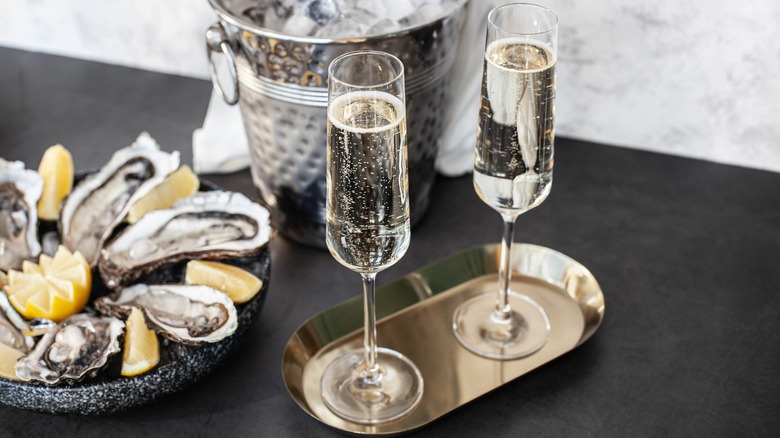The Scientific Discovery That Changed The Art Of Wine Pairing Forever
Wine pairing is a mystery to most people, giving rise to vino experts revealing the subtleties of complementary or contrasting flavors. Does it all really matter? That depends on who you consult and whether you actually care about the perfect marriage of food and wine at your table. In many ways, wine pairing is less about the elusive instincts of a revered sommelier and more about the science involved, especially when it comes to the world's newest "fifth taste" discovery.
We all learn in school that the tongue has taste receptors, aka taste buds, that help us taste the four flavor "senses": sweet, salty, bitter, and sour. Each was initially tied to particular areas of the tongue. However, Smithsonian Magazine notes that researchers have since debunked that theory, recognizing that the receptors for each taste are actually distributed all over the muscular organ. Now, a "fifth sense" known as umami has become accepted by scientists, chefs, sommeliers, wine experts, and foodies across the board.
Healthline explains that umami is, scientifically, the flavor of glutamate (or glutamic acid) and other compounds occurring naturally in certain vegetables and proteins. Though umami can be added to dishes in the form of monosodium glutamate (MSG), it generally occurs naturally in some foods as a savory or meaty flavor. And that taste seems to have a significant impact on how we pair food and wine, according to TableAgent.
A tsunami of umami
Little did a Japanese scientist and professor named Kikunae Ikeda know his seaweed discovery in 1908 would forever change the culinary world. But it did, according to Smithsonian Magazine. After using evaporation to cultivate Laminaria japonica seaweed into crystals, the savory flavor of umami came to light. It took decades and a lot of research for it to be recognized and verified as a "fifth taste," notes Umamu Estate, which led to its significant impact on wine and food pairing.
Master of wine and author Tim Hanni advocates mastering this flavor to transform how meals and vino can complement each other. Rather than specific wines accompanying select foods, Hanni believes that umami allows you to throw preconceptions out the window, explains TableAgent. Any varietal can pair with any food as long as you know the subtleties of food preparation and cooking, making slight adjustments to ensure the flavors pair well with your chosen wine. It's all about balancing and being aware of the tastes inherent in the wines and dishes you're preparing. This allows you to adjust, counterbalance, or enhance the umami flavor with other sweet, salty, bitter, and salty ones by adding simple tweaks such as lemon, vinegar, or salt-based seasonings. Learning the intricacies of the fifth taste can broaden the wine and food palette with bold pairings and new flavor horizons.

